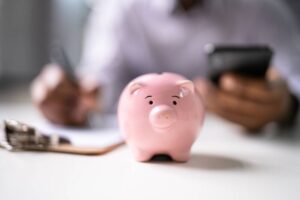How to recover from bankruptcy:
Filing for bankruptcy could feel like you’ve hit rock bottom. It might wipe out your old debt, but like a tattoo that you made when you were too young to make decisions, it stays on your credit report for seven to 10 years, which could also hurt your long-term chances of qualifying for a mortgage or any other credit.
Well, today we’re going to find ways to recover from bankruptcy and how life looks after that. There might be hardships you would have to endure, whether we’re talking about cash flow management, establishing better credit, or even rebuilding your financial profile. However, it is possible to financially recover from bankruptcy and allow yourself to start fresh.

Save the paperwork from your bankruptcy case.
Even if it may not seem like a crucial step, you should try to save all the paperwork from your bankruptcy case. You might even be asked for copies of the bankruptcy files in the near future, especially if you’re considering applying for a mortgage, loan, or any other financial product.
If you get in contact with a debt collector in the future, it might be helpful to have all your paperwork prepared. Besides, if a debt collector asks you about a debt for which you assumed you were discharged in the midst of bankruptcy, you will have proof to show. Some of the paperwork that you should prepare includes:
- bankruptcy petition and schedules
- proof of income that is included with your petition
- Social Security proof of income included with the petition
- Correspondence from the bankruptcy court, your attorney, and even your bankruptcy trustee
- The final bankruptcy discharge
Start saving some money.
After going through bankruptcy, the last thing you want is to see history repeat itself. To make sure this doesn’t happen, establish good financial habits by starting a savings account that you can easily access during financial emergencies.
If you learn how to manage your money, it will be easier to rebuild your wealth. Prevention is the best possible medicine, and saving money will definitely help create healthy financial habits for your present and future. Probably one of the most effective ways to save money is to make a habit out of it.
You could accomplish this by setting up constant and automatic transfers to a savings account. With every single check or payment you get, no matter the amount of it, you should deposit a certain percentage into a savings account of some type.
Moreover, you should aim to save around 10 percent or more for every paycheck, but make sure you select an amount that will also allow you to comfortably and consistently make savings deposits.
Some employers could even offer the ability to direct a specific percentage of your paycheck to a designated account, completely separate from the one you use to pay the majority of your pay.
Besides, some banks and credit unions could also allow you to create recurring, automatic transfers from a checking account to a savings account.
Build a budget.
As creating and living by a budget could sound intimidating or even restrictive, a budget is nothing but a proper spending plan and tool that, if used wisely, could help you achieve future financial goals.
Establishing a proper budget could help you gain more insights into your habits and maybe prevent your spending from getting out of control once again.
To get started with a budget, you need to calculate how much you earn on a monthly basis. To correctly determine your income, you could look at recurring, reliable sources of income. After that, you might want to:
Track your spending for two months. This might help you determine how much to budget for different categories of spending.
Identify your financial priorities.
After tracking your spending for two months, you could discover you’re spending way more in certain categories than you would like to, or you might be allocating enough money for other categories that are so important to you.
Create your budget. Now it’s time to itemize all the things you might need money for. The list should definitely include all the other debts and recurring bills, like utility bills, grocery expenses, and even money for entertainment. You could also allocate money for savings each month.

Reestablish good credit.
Reestablishing a proper credit score is another important aspect of your path to financial recovery after bankruptcy. There are many ways to try and do this, no matter which kind of bankruptcy you file.
- Pay bills on time. One of the best approaches to rebuilding good credit is to pay your bills on time.
- Open a secured credit card. If there aren’t any other remaining loans or debts after filing for bankruptcy that you could later use to show your ability to pay on time, you might need to get credit. One of the ways to get going is to open a secured credit card. These types of credit cards are generally backed by a savings account in your name.
- Have your utility bill payments reported. You could try to have monthly expenses such as utility bills, electricity, and phone bills counted toward your past credit.
- credit-builder loans. These types of loans involve depositing money into your account. The lender might keep the money while you’re paying down the principal and interest on the loan. The payments you will make are reported to credit agencies.
Monitor your credit reports on a regular basis.
The whole idea of looking at your credit report after filing bankruptcy could be intimidating or even anxiety-inducing. Still, you would want to make a habit of doing so, for different reasons.
It’s very important to monitor reports diligently and consistently, just to make sure that all the information you have on your profile is accurate.
Any kind of incorrect information could cause your score to be lower than it should be. If the discharged debt isn’t accurately showing up on credit reports, it could count as a form of outstanding debt.
To make things even worse, the debt could be transferred to a new debt collection agency, which would also represent a huge challenge to fix.
Maintain your job and home.
Keeping your job and home is a very important part of life, especially after bankruptcy. So is rebuilding your financial profile and reliability.
You might want to show lenders that you can easily pay back your debt, like your mortgage, and that you could also keep a reliable, steady stream of income through a job. Besides, many lenders consider your employment history when they’re reviewing applications.
Make an emergency fund.
If you lose your job or have to deal with any kind of unexpected financial need, having an emergency fund could help you avoid a terrible outcome that would land you back into debt.
You will want to get started on creating a savings account as soon as possible. Even if you have a limited amount of money, you could contribute regularly.
The deposits might add up over time, and if you make a habit out of it, it will soon integrate into your routine. Here are a couple of well-known options when it comes to saving your emergency fund:
- a savings account with a higher interest rate.
- a high-yield savings account.
If you found this article useful and you want to read more, here’s what we recommend: 6 Retail Therapy Alternatives to Curb Your Shopping Habits








